|
In the above paragraph I see;
Whatever it is you see, it's you seeing it.
You. One in an infinitesimal many. Immeasurable. That's you and your ability. Much Light for the wonder you are! 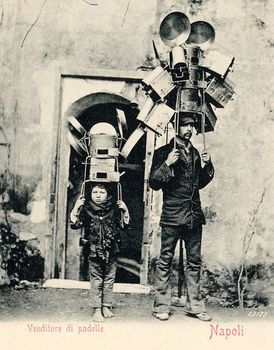 I was never much for math. At exactly the moment letters were introduced as a component of equations, I checked out. That would have been day one of Algebra class. The final eulogy was given as they ushered me in to Geometry class. Full sentences (which I equated to English class) were disorienting in the context of a classroom that purported to offer me mathematical skills. Right or wrong, I quit. I could point to the fact that my various roles have been fulfilled with the skills contained in the processes of addition, subtraction, multiplication and division and when necessity of algorithmic processing presented itself, I figured it out. Beg, borrowing or stealing being the go-to. Yet over this season of Story (Thanksgiving to the New Year) I have been afforded a coalescing of my thoughts. A coagulation that seems to have presented a kind of peace. For readers of the Recovery Dragon “Resources Connected” Blog you may have had inklings of this upcoming revelation from previous posts. For readers of Meaningful Trainings “1st (&) 15th” Blog the indicators were not as clear but as I looked back I think the foreshadows where there. Confirmation that hindsight is indeed, 20/20! Let me pull it into focus. I’m a philosopher. My life’s work is pondering, wondering, imagining. Akin to a Poet but just to the left (or right) depending on your viewpoint. The difference? Poets seem to know who they are. Anybody can be a philosopher. Being briefly overwhelmed and offering words of amazement and gratitude can convince anyone of their philosophical prowess. Those hearing the rhapsodic meanderings…not always so convinced. So, that’s my lot. I wander. I wonder. I share and spend an inordinate amount of time informally and formally considering. And selling. Like the picture, I wander around and sell my wares. You know you need them. I know you need them. Which one is the only question. And yes…I recruit my kids to help sell. It’s a subtle form of intrinsic motivation. Where are we? Welcome to the world my friends inhabit, the Galaxy of “Huh?”. My New Year’s gift, given to me and in the Spirit of the Season given to you, is an equation; Everything is story. Or, (1 + 1). Story is every thing. Or, (=). As a Philosopher, I propose. That’s when the fun begins. Anyone can then test the equation for durability, reliability and universality. Unlike math equations though, philosophy employs symbols of unequal value (letters, words) for its propositions. It’s like the number 17 being understood by each person in the world as another number.* That makes for tough going when you seek agreement. If that proposition doesn’t make your brain ache, then re-read it. You need that pain to go down this road. It’s the lactic acid of the brain muscle. A clear indication of use. I’m convinced. Per my friend, Philly Frank, “More will be revealed.” Indeed, that’s the power of Story! Hello 2017...the journal on which we continue to scribe, draw, doodle and sketch...everything! * Imagine 17 being 16.987 or 16.858 or 17.235 or 17.116 yet being presented as 17. Mathematicians or Engineers could not tolerate such variance. We wonder why communication is so difficult yet never stop to acknowledge the means by which we undertake the task is, from the outset, unreliable and we spend most of our time trying to agree on interpretation rather than meaning. The extension of this is the use of force to fit. We'll save that for another day...;-) 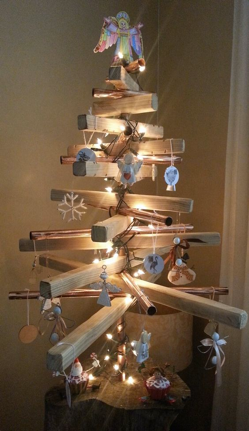 Ready or not it’s Christmas time. To date, one of my favorite seasonal traditions has been picking out and decorating our home’s “centerpiece” aka the tree. There’s a ritual to it that includes history, story, skill, memory, laughter… and, yes, a fair amount of frustration as we dig out the boxes of stored ornaments, unravel tangled lights and attempt to secure the 7-8 ft. beast in its rickety old metal stand while avoiding the deadly prick of knife-edged needles. This year is different; as some of you know, our family lost its patriarch. Along with his passing, we also lost our ancestral Christmas tree source. His snowy hillside is no longer available for our annual trek to find the perfect Charlie Brown tree (oxymoronic phrase completely intentional). John was many things – a consummate business-thinker, engineer, entrepreneur, apple farmer, bullhead. He was also an artist. So, to honor just a couple of the generational tidbits he’s handed down, we will approach this holiday and our search for the “perfect” tree with his spirit of creativity and invention. Let the inaugural Christmas Tree Challenge commence! Here’s the gist: our multi-generational team will be challenged to imagine, design and execute the “perfect” tree out of items they find around the house, both inside and out. The only requirement is that the final structure must be able to hold/support an array of our (my!) favorite ornaments. By that I do mean all the grade-school creations! I’m not exactly sure how this will play out, but I suspect our tears will be matched by laughter, our individual and collective skills will inform our process, and our memory will motivate us all. The Christmas Tree Challenge aligns well with our business philosophy – that there’s enormous value to be found in the generational transfer of knowledge, whether it be related to product, process or performance. Organizational history (story, skill, memory) is literally created by the people who live it; capturing that embedded mastery and perspective can inform new initiatives, fueling us to approach the future with a sense of adventure, creativity and invention. O Christmas tree, o Christmas tree… how lovely are thy branches! ------- A Short List of John’s Legacy “Lessons”
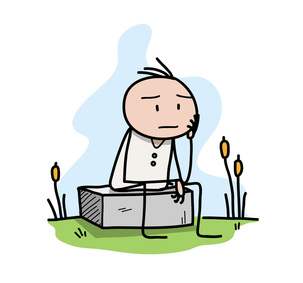 Any guesses? Mindfulness. Pattern Ball. Cranberries? Connection? Any…hmmmm…. I’m not sure what I have is concrete but I will offer that it’s a good story, and who among us couldn’t use a good story? Let’s review; 1. Mindfulness – harnessing the power of the present moment through experience. Like harnessing the power of a horse via a harness. 2. Pattern Ball – creation of wonder via coordinated, present moment focus. Which brings us to cranberries. While there are, many stories pertaining to cranberries, historical to modern day, the one I’m fascinated with, the one I’m harnessing to illustrate a connection is the one of the cranberry bog. A sea of red upon a shallow pond or bog. I for one thought cranberries existed like frogs, spending their agriculture cycle immersed (or on top of) water. In fact, that is not the case. Silly me. Among the many things it is (and there are many) an example of is community and present moment power to accomplish a meaningful task. While on my tour of a cranberry farm (why else go to Cape Cod?) the guide began the tour by alerting us that there would be no bog. Rude awakening alert! In fact, she said this as she had participants get angry at her and demand their money back. So, as I focused my gaze upon the low-lying, grassy, brownish green field out the bus window I began my acceptance. No bog. What I did learn about the bog was how it exists for a moment in the life cycle of a cranberry farm. An instant – then it’s gone, just like the present moment. The beauty of a cranberry bog, the wonder of a flowing connectedness arising from a Pattern Ball exercise each offer a glimpse into the power of our present moment. How to access that power? Some go through the door of a clinical access (MBCT) others proceed through the ancient gateways of meditation and yoga, still others create their own access point. The harvest is in the moment. What’s your bog? I’ll be the first to admit it, the concept of “Mindfulness” is getting quite a bit of press. Like anything flashy it captivates. Draws our attention. We may pay a bit of mind to it as the benefits of a sustained practice are, without a doubt, extraordinary. Let me rephrase that…EXTRAordinary. I realized this morsel of Ancient Knowledge found a space in modernity when I read about Mindfulness-based Cognitive Therapy (MBCT). The aforementioned label is a link to the Wikipedia page. Might as well go right to the source.
I was visiting with my friend who has spent the last (30) years in Solitary Confinement and I was telling him about the practice and he blurts out, “That’s what I’ve been doing!” No doubt. Thirty years in a (8x6) box demands extraordinary if you have any chance of nurturing a shred of peace. So I imagine. And that is the power of Mindfulness. My task is not to provide you with words but rather as ensconced in the title of this post, is to draw forth a connection between cranberries and a game we recently discovered at a workshop. First the game… Imagine twenty people in a wide circle. Everyone has one person they will throw a rubber ball to and one they will receive from. They are different people. Easy enough. As the ball begins to fly from one person to another (they are soft balls…;-) order ensues. Now, the leader adds another ball…then another ball…then another ball…and if smooth flow continues…one more ball is added. Thus, the name, Pattern Ball. Imagine the wonder if you were to look down and see the uninterrupted flow of multiple colored balls, creating a pattern. Our learning curve to Pattern Ball proficiency was not steep and it was not fraught with concern, worry, fear nor frustration. While you imagine yourself sharing in the enthralling wonder and glory of Pattern Ball professionals worldwide – you pause to ask, “what about the cranberries?” Indeed, what about the cranberries? We’ll stop here though and let you have a few days, fifteen if you’re a fan of the Blog, to consider. Stay tuned and be mindful for natural connections. (<That last sentence was a hint…;-) This year from sunset October 11 until after nightfall on October 12, many people, Jewish and non-Jewish marked the Jewish High Holy Day, Yom Kippur with fasting and prayer. While I have heard of Yom Kippur my whole life, I really never knew the significance of the holiday. That is, until Washington Post syndicated columnist, Dana Milbank corrected this oversight in my cultural education.
Like many, I’m sure, I thought the Day of Atonement was singular, when individuals made amends for their numerous oversights throughout the year. The theory goes, when the body is uncomfortable – no food, multiple prayer services, no perfume, etc. for the day – then the soul is also uncomfortable and when one “feels” this pain, they can better appreciate the pain felt by others. Thanks to Milbank, I now understand that while the experience is individual, the empathy lesson is meant to go far beyond the individual. Indeed, the holiday is meant to awaken a sort of “group consciousness” to the suffering we have all inflicted directly and indirectly. He goes on (very eloquently, I might add) to connect this collective responsibility to the current political climate, calling us all out for the historical somnambulism that has allowed political corruption, incivility and divide to fill a gaping void left by lack of community involvement and oversight. He’s right, of course, nothing happens overnight. Years and years have led us to now and it will no doubt take years and years to fix… if, and only if we all choose to bear some responsibility for the brokenness AND we all begin work to repair it. Big task. Isolated to politics? Nope. From loss of community to mass incarceration, perpetual war to addiction and increasingly medicalized death, we ALL bear some responsibility for allowing cruel isolation, stigma, indiscriminate killing, and electronic anesthesia to become our cultural norms. Is it any wonder employees feel stretched, students feel squeezed, families feel disconnected? All this puts even more pressure on our work and education structures. Admitting it is the first step toward recovery. Consistently acting on that admission is a pathway to long-term, sustainable health and wellness… for our culture, for our workplaces, for our homes, and for our souls. Let’s be the generation that takes the first step; let’s turn it around… maybe by looking back, maybe by focusing forward on the positive power of community. We can be collectively responsible for joy as well as misery. How? Let me tell you a nifty story about a hungry man and an elephant… https://www.washingtonpost.com/opinions/shame-on-trump-shame-on-us/2016/10/14/841e54e8-9214-11e6-a6a3-d50061aa9fae_story.html?utm_term=.b9679e3ee213 “I know what you mean.”
How often have you heard these words? How often have you said them? After tonight, I promise to do my best (yes, I was a Girl Scout!) to never take these words for granted again. Let me explain. After a lively day packed with meaningful work, I found myself in a bland hotel room with a little too much energy for sleep, so, yes, I’ll admit it, I entertained myself with some channel surfing. When I happened upon TLC, the preview for a rerun of Two in a Million captured my imagination. Not sure if you know the show; I’d never heard of it. Basically, the creators bring together two people with rare medical conditions so they can share their struggles, hopes and dreams with someone who “gets it” in a genuine way. Here’s a little background: http://www.cnn.com/2016/04/06/health/rare-medical-conditions-two-in-a-million-tlc/ The creators hope their work will help end bullying based on visible differences. That’s great, but what I took away from the episode* I sat glued to for an hour was the absolute power of peer support. Two kids with the debilitating facial deformities of Goldenhar Syndrome who’ve endured pain, isolation and taunting – not to mention myriad medical/surgical interventions, functional difficulties with tasks of daily living, and unapologetic disgust from heartless people around them – are brought together. Their relief at finding another person who has “walked in their shoes” is matched only by their delight. They are kids after all. Kids who giggle and make jokes and laugh. In Elena, however, Austin finds more than just a friend; he also finds the strength and courage to consider yet another painful jawbone expansion surgery. Austin and Elena’s mothers are equally impacted by the weeklong visit. Clips of the women’s conversations reveal the depths of loneliness, frustration and even anger that result from feeling alone. By sharing their experiences, struggles and fears they derive solace from each other. Like their kids, they feel braver, too. That’s the power of peer support. It cradles us in the comfort of another and spurs us to face challenges. Peer support brings out the best in our humanity and reduces our isolation. Peer support can make harsh words vaporize and stigma vanish. Oh, and, by the way… peer support doesn’t usually cost as much as therapy, pharmaceuticals or in-patient treatment for a host of anti-social human conditions, and it certainly costs a whole lot less than prisons. You see, as humans, I believe we crave each other in a way that is beyond language. In isolation we become hollow and vicious; in community we become who we’re meant to be. This is what I will be talking about long after the specifics of the episode fade. *check out the episode on TLC.com or various clips on YouTube “I was talking to my friend Joe on the phone one night (also a poet) and he told me that he was invited to give a poetry reading at a university by another poet and that poet introduced Joe to the audience as an ‘impoverished poet.’ It got me thinking…” Sandra Simonds – Poet (*)  Our friend, Art Woodard a mentor in our world of facilitation often uses the title of this blog post when describing the endless conundrum of being humble as we pass through our daily interactions. The implied imperative is to be mindful in and of our assumptions and judgments. Modernity has given us the epitome of bittersweet, the opportunities to live lives and pursue dreams once unimaginable for the masses. This luxury comes at a price, however, in the form of a dizzying pace and ceaseless confluence of demands. As we weave our path amidst it all we are charged with a constant winnowing of choices – how we do that and this, what stays, what goes, what gets attention and what gets ignored. In this melee, as our attention and response is required, we do the best we can. The fault lines become clear when we are quick with our assumptions and judgments. They can be hurtful to those close to us – both family and those passing by in a moment. The example given in the quote rang true for me. Trying to be funny or erudite, "I" just say whatever comes next. Wrapped in temerity it sounds good and we all get a chuckle… …next… …except for the one to whom I refer... or to those hearing my words that know what I don’t. So if I hear Art (who looms large in our world) and I actually hear him – I’m challenged to reflect on what I’m doing and how it moves into the world. When I do that, life slows down. I see more. I hear more. I wonder more. I question more. I listen more. I serve more. In a world where the opportunities and urgency to “get more, do more, be more” seemingly never end – the simple reminder to remind myself that I don’t know, what I don’t know has given me more than all the world has to offer. (*) From her comments about her poem “For Joe”, provided by Poets. Org and found at the following link https://www.poets.org/poetsorg/poem-day?utm_medium=email&utm_campaign=Poem-a-Day%2520%2520October%25203%25202016&utm_content=Poem-a-Day%2520%2520October%25203%25202016%20CID_1287876f2dd694a74b28a83fb0c1a347&utm_source=Email%2520marketing%2520software Watching a segment of the public television show, NOVA, the other night I was reminded of the truth in the adage, “everything old is new again.” The segment was titled “Schools of the Future” (link below) and it described the latest research and practical applications having to do with public education at the high school level. The essence of the episode (SPOILER ALERT) was the positive effect of an emotional connection, with a task - in this case learning. When there is a deep emotional connection with something we give it value. It means more.
While watching I vacillated between joy (helping individuals and organizations realize this reality is what we do at Meaningful Trainings), disbelief (Really? How did we forget our nature in the first place?), anger (Are you serious?) and back to self-satisfaction (Meaningful Trainings has been doing this with our clients for years!). The program concluded, my emotional rollercoaster disembarked and I fell into my delayed slumber with a gnawing thought, why did that NOVA segment get my juices flowing? I do my best thinking while asleep. How do I know this? Upon awakening I’m given insights into perplexities that stymie me when awake. No wonder they make me tired! I must intuitively know that the answer lies in the netherworld of dreams and creative subconscious musings. Lo and behold I awoke and realized why that NOVA episode resonated so loudly; we named our business after the truism presented, Meaningful Trainings. Small world! Of all the reasons we chose our name the number one was our experience that meaning contributes greatly to motivation. Our stock and trade, the raw material that imbues every Meaningful Trainings engagement is the belief that intrinsic motivation is the key that unlocks the treasure. That treasure is the individual. No matter the task, collective or individual, if it doesn’t inspire – if there is no meaning or emotional connection then everything else wanes accordingly. If you have time – here is the link. http://www.pbs.org/wgbh/nova/body/school-of-the-future.html Enjoy! This extension of the previous blog is an exploration of shared experience. The question beyond how we come together, putting aside affronts, injuries and self is why come together? From a base perspective the answer is self-service – if I don’t gather the information you have about certain situations then I may not be able to survive. Times have changed but it once was that planting instructions for crops, recipes for homemade tinctures and how to get from one place or another were a bit more involved than a visit to the grocery store or Google Maps.
The lessons that carry us through our quotidian challenges all have a fine point in common, someone helped refine the insight we’ll use to reach our goal; small or large there is virtually nothing we do alone. Be it family, friends, neighborhoods or more formal constructs such as organizations or businesses the need to work in concert for the greater goal is no less imperative than in the days of maps edged with dragons or wondering if eating that plant would result in my demise. Clearly we need each other. As a good friend of mine says “we are connected as f**k.” I’ll reveal he is nineteen years old, thus the poor articulation of what is no doubt an understatement. The entirety of our mission at Meaningful Trainings is to help organizations and individuals create sustainable processes that support the core building blocks of purpose; stones etched with the questions “Who Am I?”, “What Am I Doing?”, “Who Are We?” and “Where Are We Going?”. A bit ethereal no doubt (try and make a living at it!) but crucial to the sustainable, innovative longevity of any community, personal or professional. The raw material weaved into our workshops and coaching interactions are what we refer to as “Ancient Knowledge”, lessons that while endlessly reinterpreted, repackaged and re-represented arise from principles that pre-date recorded history. While Meaningful Trainings relies on Montessori learning theory and peer support principles I was reminded the other night they can never replace the “real thing”; only made manifest by the interactions we share in the range of our spoken words, not with a post like this or similar intellectual finger-painting exercises. My reminder presented itself as I stood in a beautiful gathering space within an orchard and winery among three generations. Dropping in for an end of summer farewell my oldest daughter and I spent three hours with another family’s patriarch, wife, child and exuberant canine. As we stood conversing, trusting, sharing, imagining and hoping I was overwhelmed by the presence of my recently departed father, our family patriarch referenced in the prior post, Odds & Ends. It was as if he was there fully engaged in the conversations adding to our thoughts, checking our comments…and I realized he was, made present by our interactions. The simple acknowledgement of another as to what’s possible versus endless concern with self is a core definition of “Ancient Knowledge”. Imagine if those before us had chosen to forego the investments we harvest today and let us consider; what seeds are we planting for others to harvest tomorrow? Kate’s going to die. This is not news; we’re all going to die after all. Nevertheless, it’s hit me like a tabloid headline, like a vulgar shout, like a home invasion. My beautiful, feisty, curly-haired friend (and former “cupcake killer” partner in PTO crime) is going to die. Before she turns 50. Before her daughters graduate high school. Before many of us, including her are ready. She only just told her girls that the disease they’ve watched consume her for the last two years has reached an end-point.
They already knew. We all did. Still in our irrational belief in miracles, we all denied it. At the risk of being accused of blaming the victim I must say Kate didn’t help matters much. She’s always been a private, extremely self-sufficient person. Perhaps this came from being raised in a houseful of sisters or from her years as a single mom whose husband didn’t fool around with another woman, ask for a divorce or leave her. He died too, tragically before her youngest was even born. Whatever the reason, Kate retreated into a very small world, keeping much of the gore to herself, asking for and/or accepting so little that many of us on the perimeter felt hollow… like she was already gone. And, therein lies the “odd” part of this consideration. When Kate passes, I know for a fact, as sure as I’m still living, that it won’t really affect my day that much. I imagine there are some who will scoff at that, call me cold, heartless even… but really, when we’re being COMPLETELY HONEST how many of us could say the exact same thing?!? We may give a hug, make a call, send a card. If our schedules allow, we may even attend the service and shed a tear, but is it profound… or perfunctory? That’s how disconnected we are from the truly meaningful events in our lives and those of our neighbors, so-called friends… and even, sadly, family members. I speak from experience. Just before Christmas our family lost its patriarch. Amidst an array of completely human and physical “failings” he left us to figure it out… alone. Rather than see the blessing right in front of our eyes, the entire family resorted to isolation and private hurt. Rather than shared experience, the profundity was swept under the rug… like a secret, like a mess... so NOT like the connecting experience that reminds us of our very common life… and death. Our humanity is fragile and incredible at the same time. Our relationships could be what connect us through time and space, through life and death, so we understand and appreciate our own living… and dying. 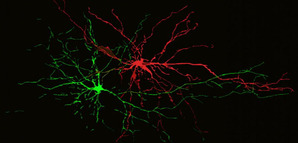 It’s not unusual to experience poor customer service. In a society driven by consumption such voluminous interactions can go awry with regularity. The modern dance of daily tasks coordinated within razor thin windows of opportunity leave little room for misstep much less the human reality of frailty and more recently, multi-tasking. So it was with exuberance a friend and I contrasted a common experience – dining out. Hers was over five years ago and she has not returned. Mine a few months ago and I long to revisit one of my favorite epicurean destinations. What lies behind our unique experiences? It’s not the food. The experience we each had was the same – poor customer service followed by an even worse response from the front-line supervisor. The difference arose when we both followed through with an up-the-chain conversation relating our experience. In the case of my friend, the care she took to communicate hers was met with lackluster concern. Mine was met with a full inquiry of specifics. Hers was summarily reduced to a singular event and was assured she and the restaurant were immune from any future repeat of a “not normal service level.” For me, the point person took my address and asked me to use the gift certificates he was forwarding to, at our convenience, revisit and experience the restaurant in question again. Then, he asked in a manner I can only associate with the eager willingness of someone whom really wanted to know, to call him (on his cell number that I was presently using) and provide every detail of our meal and dining experience. You can imagine the cost (or lost revenue) to her, once favored establishment and also estimate the retained value of my loyalty. Now scale each up by (x) for the same experience had by others. This value is created within the organizational culture and with all things cultural, they take time. Coaching, training and skills development are the components that firmly establish any long-term paradigm or process. The response (words and reactions) we each experienced when seeking to communicate our interaction with the respective organizational leadership were set as a matter of culture even before we had our individual meals. Momentum is tough to change. Outward representations of unseen forces are easy to identify, thus we have no lack of spectators to inefficiencies and poor processes. The way to sustainable cultural change lies in the imagination and involvement of those same spectators. Once given the surety they have the resources and latitude to create – their intrinsic motivation moves mountains. The next time you enjoy a wonderful customer experience, pay a quick thanks to the many who worked hard and supported the learning processes of those delivering that present joy. The fleeting moments we tend to take for granted are often years in the making. trau·ma
/ˈtroumə,ˈtrômə/ noun 1. a deeply disturbing or distressing experience; a physical injury synonyms: wound, abrasion, damage, cut, laceration, lesion, contagion Trauma is a pretty loaded word these days… or so it seems in many of the realms in which I’ve been operating of late. In fact, I’m a little timid to write an entire post about it, for fear I might inadvertently “trigger” someone’s deep emotional pain and cause them to re-feel something they’ve tucked away. But, as I’ve had the satisfaction of hearing comedian, Kathy Griffin say, “If I’m not ‘triggering’ someone with something, I’m not doing my job!” So, here I go. I’ll just start with this: by the definition above, each and every one of us has experienced trauma in some form or another. Seriously, abrasion?!? I remember vividly the wide variety of rug burns and road rashes I’ve experienced in my 52 years. I remember the lurid gash on my right elbow that kept splitting and bleeding as I caught myself over and over while learning to navigate my bicycle over uneven terrain in the (heaven forbid!) asphalt playground of my childhood. I also remember the pride and sense of accomplishment that came along with success, not to mention the serious “cool” my scar conveyed when I showed it to my friends on the school bus. I also remember a wide variety of deeper, emotional hurts… the losses, the betrayals, the violence… I’ll spare you the gory details, let’s just say, “I get it, I really get it!” But, what I’m more curious about is why some professions/institutions seem to be so singularly focused on viewing trauma as a source of never-ending sorrow. This seems diametrically opposed to the classic, self-reliant bootstrap-pulling mantra of our culture-at-large (especially in light of its unrelenting violent nature and behavior), but also to the idea that we learn more about who we are, what we want, how we operate… in other words, our inherent and acquired strengths… by the way we not only survive, but thrive! What if we turn trauma on its head? What if we celebrate its transformative power and focus forward rather than backward? What if we just admit, life = trauma to varying degrees and concentrate on the serious “cool” that sharing our success stories and scars might convey? What if we spent more time working to reduce the sources of pain, sadness, betrayal, violence? I’ll leave you with this: what if we treated trauma like the Japanese potters who practiced the art of Kintsugi? Rather than disguise an item’s breakage, kintsugi restores the broken pot, bowl, container by incorporating the damage into the item’s aesthetic, making the damage a part of the object’s history. Kintsugi repairs the cracks/breaks with a lacquer resin mixed with powdered gold, silver, platinum, copper or bronze, resulting into something more beautiful than the original. Sounds, to me, much better than tiptoe-ing around brokenness and/or trying in vain to avoid it. Imagine going a few days without a drink of water.
Go ahead...let that imagery and feeling set in. Now...imagine your community or organization going a few years without the exchange of rites, rituals or celebrations. Before you know it everybody is working in hardened silos and your business is devoid of culture. The import of knowledge transfer and its impact on sustaining culture is easily lost in the short-term focus devoted to yesterday and today. Tomorrow is the driver of the concern and durability that we invest in today. The arising resiliency and innovative power of teams and organizations connected via shared culture are the fruits by which those who follow will enjoy, nurture and provide to those who are but a hopeful vision of our energies.  When I was a relatively new mom I had the benefit of living very close to my own mother. She was a great help with my small band of banshees. She read stories, sang lullabies and babysat (even overnight!) whenever I needed. She visited or called every day and never left a sink full of dishes undone… EVER! Well, now she’s 80. My children are nearly all grown, most gone, and mom has moved into our guest suite on the first floor. She likes my dogs well enough, but while she’ll never say so, it is a struggle to fill their dishes. And sadly, her hands are so weakened from arthritis and gout that dishes done by her now need to be (discretely!) re-done. I love the perspective that time has afforded my family and me. My challenge is to both recognize and articulate it. So here goes… I’ll begin by quoting my 19-year-old philosopher who noted wryly, “We’re all connected as f**k!” While somewhat inelegantly stated, I have come to believe this truth as it applies to both mundane and profound relationships. It speaks to the core of my Montessori being. Classic Montessori directresses (teachers) are not didactic; they are merely connectors to a variety of hands-on materials that teach the intended, universal lessons. When I expand this concept, our universe is one large classroom and we are all living connectors. We connect past to present. We connect actions to meaning. Indeed, we connect the divine to the everyday. Viewed in this connected context, it necessarily changes how we treat things around us, and each other. As conveyers, we carry messages. As bridges, we provide pathways. As witnesses to the process, we ultimately provide perspective as well. Whew! At first glance, this may seem overwhelming, an impossible position, but upon reflection, I find it completely freeing: it is not all about me… indeed, it’s possibly NEVER about me… yet what I do as an individual has the power to affect all of humanity. Sadly, like my mother’s hands, our culture/society has become gnarled and weakened by time and repeated tasks. We continue to do things that we have become incapable of doing well. Our systems (education, criminal justice, economic, you name it!) need revisiting, re-imagining and an injection of new energy… a compassionate energy that respects the individual, yet recognizes his or her larger connection… to everything! How might this perspective reframe what we do, seek, consume? How might it build a deeper, more meaningful relationship among and between all living beings? By relinquishing our white-knuckled, atomized control, how might we actually preserve and sustain all of humanity? 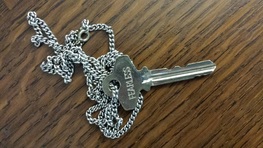 When confronted with an emergency the natural reaction is to do something. Professional nurses, firefighters and police officers engage in continuous training and practice so when that moment presents itself their actions are quick, competent and helpful. When events conspire to present the ordinary with an extraordinary twist - the "do something" often elevates action that disregards obvious, thoughtful solutions. Addiction and addictive behavior has been around awhile. Maybe as humans began acting we've always had a component of obsession and addiction in some part of our energy. Today's headlines are filled with the latest iteration and effect of the scourge that we seem unable to shake nor confront in a sustainable manner. Doomed to repeat the mistakes I offered the following viewpoint to our local paper in hopes that our community might step back and try something different to the same old challenge. Imagine if those we rely upon to help us in a crisis had to find a new key each time the same problem arose. Frustration might be an inadequate description of our reaction. Enjoy and please feel free to pass along, quote and use as the thoughts assist in your locale. Star-Gazette, Guest Viewpoint - 4/29/16 A sampling of recent newspaper headlines throughout the Southern Tier: Do something: We need solutions on addiction now Southern Tier needs leadership on heroin crisis Hanna, Reed request White House opioid forum Resources not following rise in heroin use These stories highlight the challenge virtually every community faces, an unaddressed addiction crisis of which heroin is the latest bellwether. In my lifetime the same headlines have applied to crack and meth, and with the addition of alcohol, the tragedies and costs are reported almost daily. Combine these articles with coverage of the new/old governmental joint taskforces, roundtables, pleas for assistance, resources, answers/solutions and we have a concise example of a recurring nightmare, where the frightening part always appears, yet you awake without any resolution. Awareness, no matter the motivation, often leads to thoughtful problem-solving. Creative solutions differ strikingly in both tone and tenor from the problems calling for their presence. The clearest indicator of solution-based vs. problem-based thinking is the descriptive language used. The articles and reports detailing the struggles of individuals and communities facing addiction always contain the words war, crisis, epidemic, fight, battle. These are reactions, not sustainable solutions. The reality of our situation might best be characterized by Ambrose Bierce (1842-1914), who said, “There is nothing new under the sun but there are lots of old things we don’t know.” When applied to addiction, it seems like we are ignoring what we already know — recovery. We can articulate the problem and its manifestations, so why do we miss the solution when it’s as big as the challenge we face? I’m not sure. What I am sure about is that communities already have many powerful resources to face the challenge of addiction. Recovery embodies words like resource, wellness, support, peers, non-clinical, strengths-based, forward-facing — words that offer positivity and possibility to those seeking to change addictive behaviors and their effects. Detractors will say “we don’t have time because too many people are dying.” While true and tragic, this has always been the case with addiction, yet we still attempt to wage the same battles, employing proven, ineffectual treatments. Still others will scoff at such a simple proposal as focusing on a panacea while a fire rages, yet I can tell you even the wildest, uncontrolled fire is finally extinguished one flame at a time by the smallest of water molecules. The problem is not new. The fear-based reaction of our leaders and institutions in response to the individual manifestations of addiction is also not new, despite headlines, roundtables and joint task forces that present politicians and specialists as luminaries leading the way. The simple fact is the resources communities seek to sustain recovery and implement recovery-oriented systems of care are available today. Recovery-oriented systems of care refers to the idea of a coordinated network of community-based services and supports that is person-centered and builds on the strengths and resilience of individuals, families and communities to achieve abstinence and improved health, wellness and quality of life for those with or at risk of alcohol and drug problems. Are we finally ready to elevate the principles and practices of recovery? To employ solutions that presently exist and elevate outcomes of an addiction treatment industry that are consistently inadequate? The real question remains as it was in the day of Ambrose Bierce: Are we ready to discover what already exists? Cadwallader, an Elmira resident, is a creative partner in Meaningful Trainings. Learn more at meaningfultrainings.com. 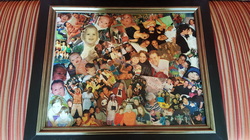 No, not the Beatles lyric. Rather, a multi-generational group of related or unrelated people living together under one roof. What?! You mean like it used to be among immigrant populations and farmers in America long ago? Like it still is in many parts of the world? Yes… emphatically… yes! As I sit alone in my 3000 square foot home I am embarrassed by the sheer unused space and overwhelmed by the deafening silence. It seems just a few seconds ago I was a busy work-from-home mother with four energetic children underfoot. For years this place buzzed with a life of its own as some industrious spirit cooked or built or created or cleaned something somewhere! Sadly, all industry has now fallen to my husband and me and I must say it’s extremely BORING… and costly… and exhausting… and, frankly, lonely. It feels as if much of the meaning has gone missing. That’s why I want to bring it back. Not in some crunchy commune or dreamy academic kind of way, but rather a very hands-on, practical shared living experience. Sort of like a Montessori Adult & Children’s House where the community members get to sleep over night. In an authentic Montessori Children’s House, the work-space (classroom) truly belongs to the children. In it they create a micro-community with shared responsibility for function and maintenance. Materials are designed for auto-education and older children who’ve internalized the rules guide and monitor the younger children so very little adult interference is necessary. The primary job of the Montessori directress is to prepare the environment – rotating and refreshing materials and experiences to keep them attractive, relevant and engaging – and providing lessons to children as needed so they can attempt and ultimately master new and/or more challenging work. In the multi-generational environment I imagine, much of the hands-on preparation work (aka the heavy lifting, yard work and grocery shopping!) would be done by those most capable of doing it. In practical terms this would mean that those of prime income earning age and talent would work outside the home while those on either end of the spectrum would fill in on both sides and the middle. Elders, adults-at-home, young people and small children would be responsible for a variety of specific age- and skill-appropriate maintenance tasks. Many hands make light work, so working together would be encouraged and supported, thus serving to strengthen relationships as well as the household fabric. Additionally, elders would be regularly called upon for their insight, expertise and wisdom… especially as reading coaches and homework helpers! Of course a variety of cost-sharing details would need to be worked out and care roles would shift as elders got, well, elderly… but I think if the home culture were attended to with a great deal of care and the inter-generational relationships were built very honestly over years then that support – both the financial and the physical kind – would flow as a matter of course out of gratitude and love. Hm-mm...what’s for dinner? “There is nothing new under the sun but there are lots of old things we don’t know.” |
Author(s)Blair & Fell expounding, thinking, sharing, hoping, wondering. Archives
April 2022
Categories |

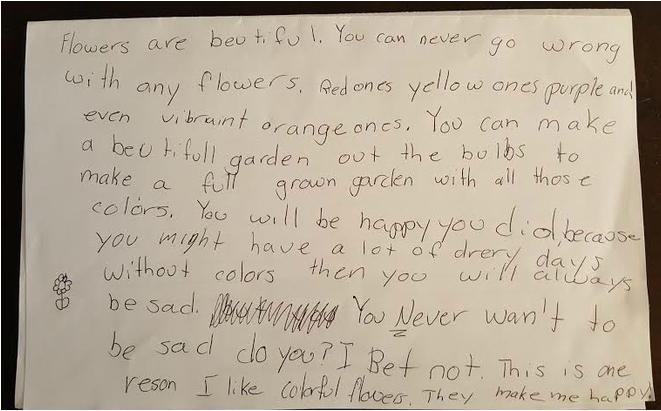
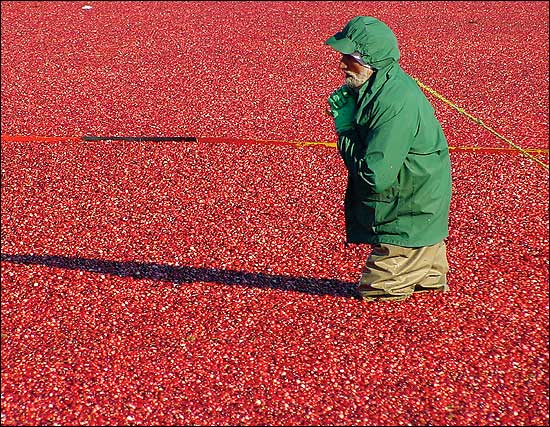
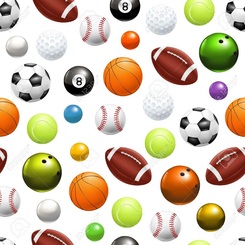
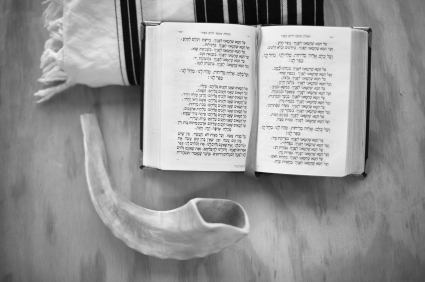
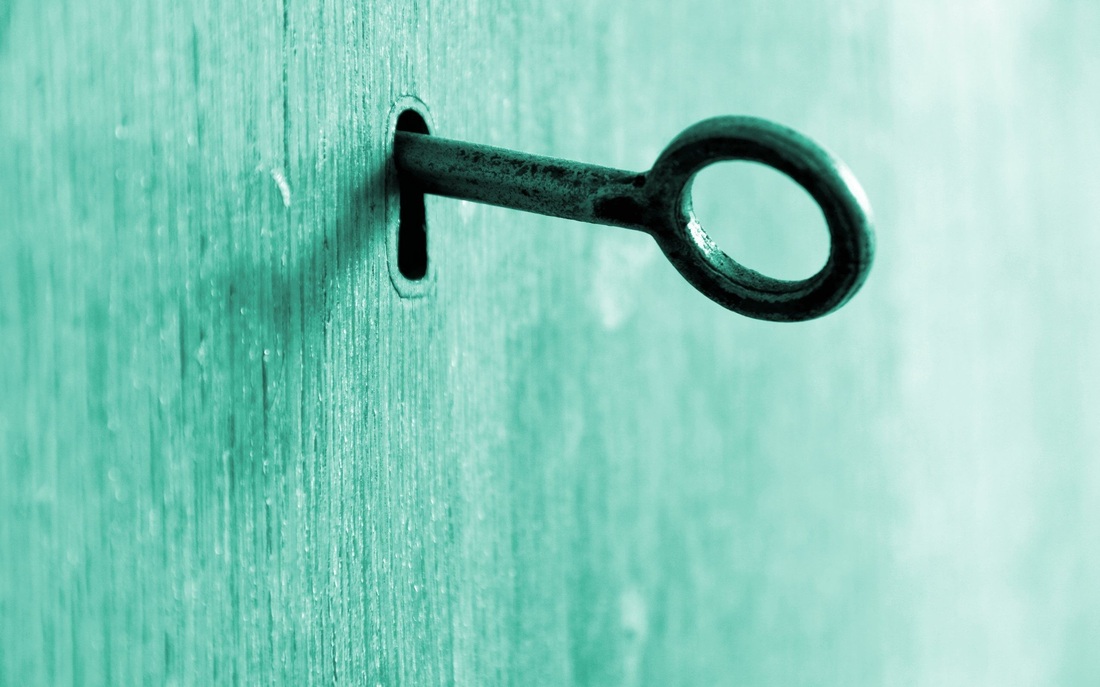

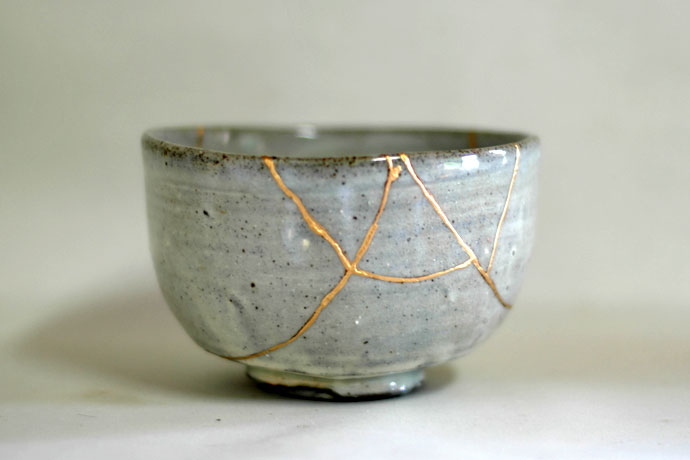
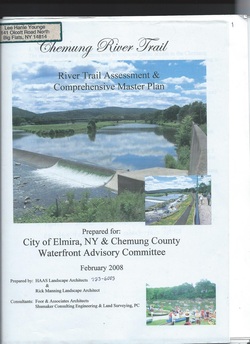
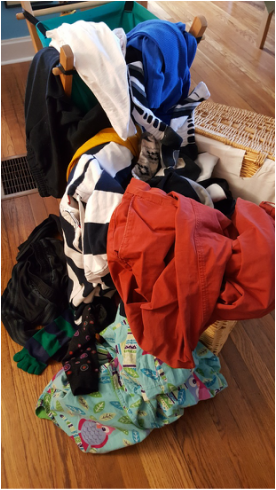
 RSS Feed
RSS Feed